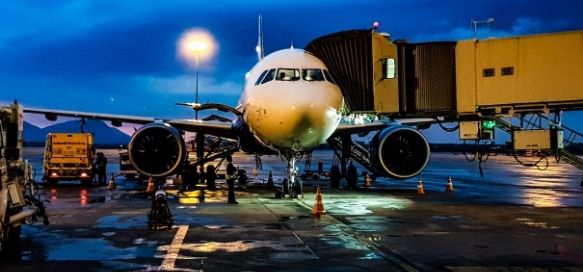Us humans, as a species, have a primal need to travel. With its aircraft, the aviation industry facilitated this travel for us, both domestically and internationally, before the COVID-19 pandemic reared its head. It was registering significant growth and development until the global pandemic lockdowns forced it to suspend its operations. As a result, like many other industries, the aviation industry too suffered irreparable damage. The global pandemic lockdowns are gradually being eased and industries have been given the green signal to resume operations. However, none of these industries are expected to be the same again. Afterall, the post COVID world itself will no longer be able to return back to the pre-COVID world.
Travel and tourism behavior is expected to change drastically, further impacting the aviation sector. The aviation industry must find ways to cope with these sudden changes. In this article, we look at the transformations we can witness in the aviation industry post-COVID.
Flight Operators to Have Lesser Fleets Ever since the COVID-19 pandemic, airline operators have been registering a sharp decline in seat occupancy. Most of their airplanes are remaining grounded without passenger demand. A grounded plane is expensive to maintain. Airline operators are not only being able to make no profit from their grounded planes, they are, in turn, having to shell out enormous amounts of money to simply retain these planes in their fleet. Aircraft lease rentals charge exorbitant fares and paying for them make no sense for airline operators who are struggling to keep their businesses afloat. Consequently, most airline operators are either shutting down their operations completely or drastically reducing their fleet size to be able to sustain their operations.
Aircraft Manufacturers to Minimize Production The aviation industry is crumbling and major aircraft manufacturers are facing the brunt of this equally. Boeing and Airbus plane manufacturers do not foresee any fresh new orders coming in post-COVID. They are already receiving requests to have unfulfilled orders cancelled. With airline operators planning to retire older models of existing airplanes in their fleet earlier than decided and aircraft manufacturers not planning any updates, aircraft manufacturing is also expected to slow down.
Aircraft Operators Will Need to Strategize to Win Over Customer Trust The flying population will considerably shrink with the Novel Coronavirus pandemic bringing about the categorizations of “Essential” and “Non-essential” travel. Research has found that, only about 30% of the travels we engaged in, were infact essential. All other kinds of travel such as social visits, vacations and routine business meetings are non-essential and can be done without. According to surveys, even though airline operators are now functioning, half of the flying population are unwilling to avail air travel for approximately another 6 months now. They fear jeopardizing their health by traveling on flight.
Airline operators need to find ways to build trust among their customers and reassure them to resume air travel adequately. They will need to rethink their business strategy and make careful investments into existing operations to be able to do so. Some of the changes they could introduce are –
- Cheaper tickets
- Enhanced safety and hygiene measures
- Touchless check-in and boarding for passengers
Safe and Hygienic Flying to Become a Norm The aviation industry needs to keep up with the changing norms and practices of society. If airline operators want customers to book seats on their planes, they will have to provide exemplary hygiene and safety features to passengers and the future. Deep-cleaning, utilizing social distancing and available technology to enable no-touch check-in and boarding procedures at airports, can help the industry gradually revive itself again.





